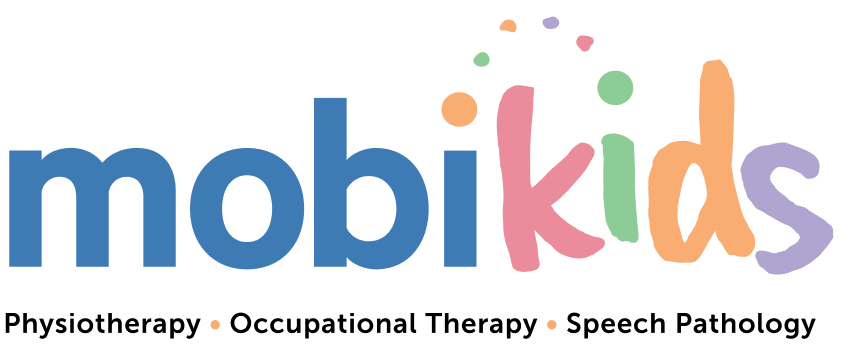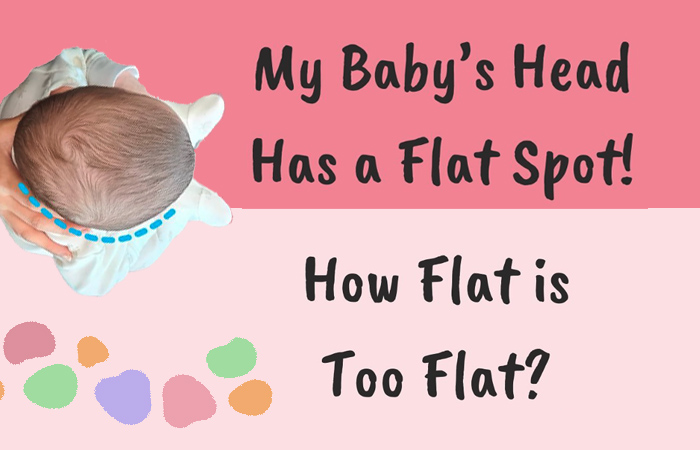As a parent, observing your baby’s growth and development can be both exciting and filled with questions of uncertainty. Amongst the many milestones and changes, you may come across moments where you find yourself grappling with uncertainties regarding concerns about your little one’s head shape and neck movements. Plagiocephaly and torticollis are two conditions that can cause worry amongst parents, however, understanding when to be concerned is key to ensuring that your baby’s development stays on track. Let’s chat about it!
What is plagiocephaly and congenital torticollis?
Plagiocephaly:
Seeing an asymmetrical flat spot on your baby’s head can be daunting at first glance. However, it’s more common than you might think! So why does it happen?
Plagiocephaly is a condition that is characterised by asymmetrical flattening of the head. It occurs during infancy and is usually most noticeable during the first few months of growth. This can develop when a baby spends prolonged periods of time in one position, leading to increased pressure at one part of the skull. This pressure can result from factors such as sleeping position, restricted movement, premature birth, and twin births. As the newborn skull is still soft and malleable, mild cases of plagiocephaly can sometimes resolve by itself. However, moderate to severe cases may not. If left untreated, plagiocephaly can lead to developmental delays and functional difficulties.
Congenital Torticollis:
Is your little one showing a preference for one side, or favouring a noticeable head tilt? Let’s explore this together!
Torticollis is a condition that is characterised by abnormal or excessive head tilt to one side, caused by tightness or shortening of the neck muscles. Along with a head tilt, torticollis can also present with neck pain and stiffness, limited range of motion, and muscle tenderness. Some contributing factors for Congenital Torticollis include abnormal positioning in the womb, positioning outside the womb, as well as some neurological conditions. If left untreated, Congenital Torticollis can lead to secondary changes to an infant’s head shape, reduced range of motion, and eventually developmental delay.
When should I consider intervention? Let’s talk about it!
Like we discussed earlier, although mild cases of plagiocephaly can sometimes resolve spontaneously, moderate to severe cases may not. Early intervention is key to avoiding potential barriers to your child’s development and function.

Here are some signs and symptoms to look out for:
- Flattened head shape
- Visible shift in facial features
- Limited neck range of motion
- Head tilt
- Banana posture
- Muscle tightness or tenderness
- Preference for head position and direction
- Asymmetrical functional movements (e.g. only rolling to one side)
If you notice any of these symptoms in your little one, intervention and assessment by a paediatric physiotherapist may be indicated.
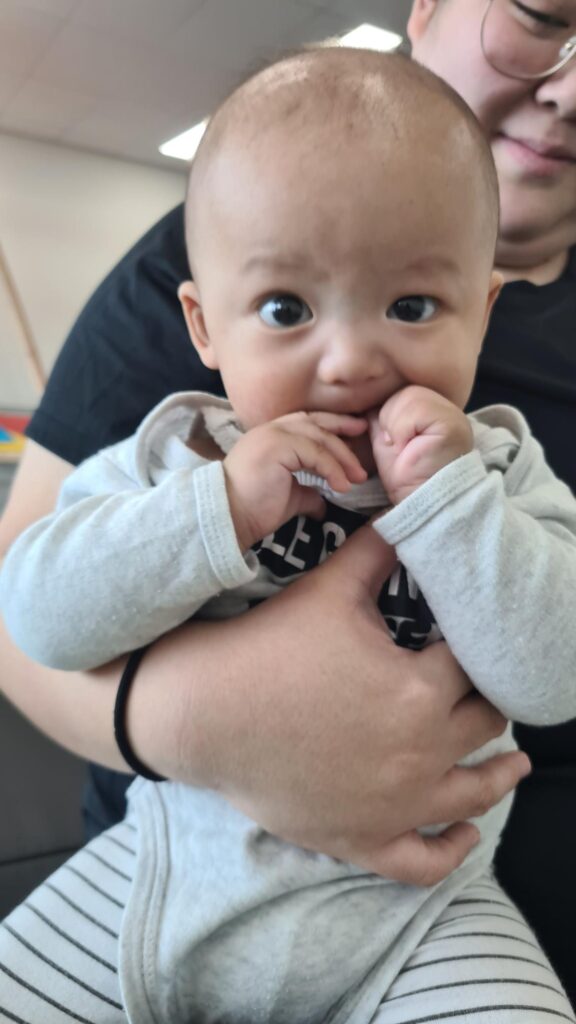


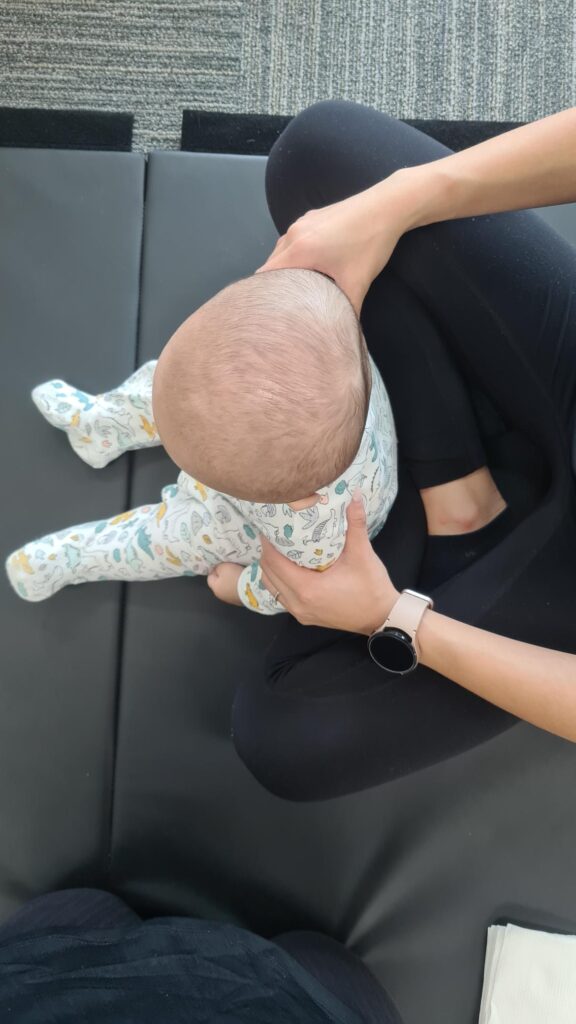
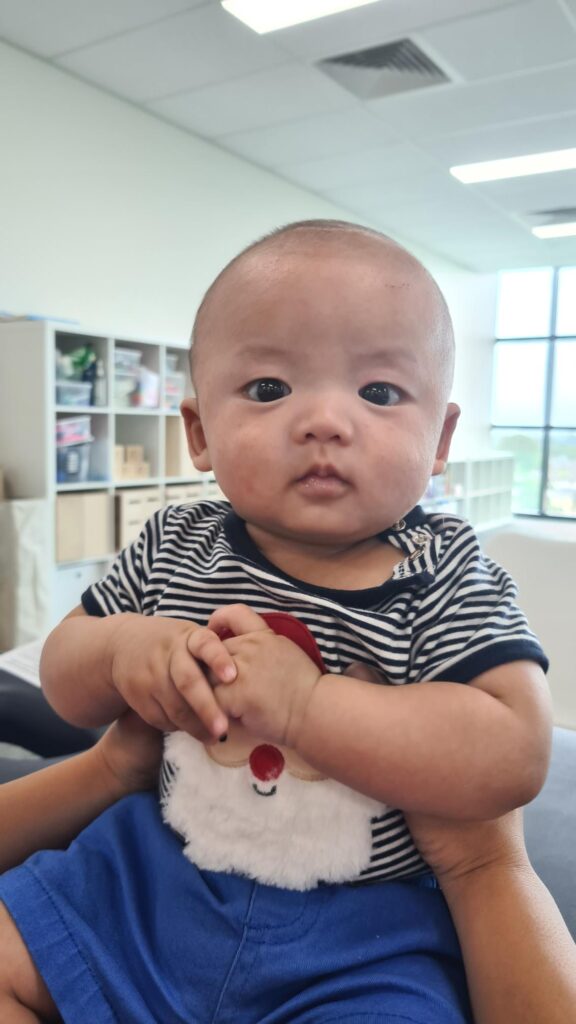
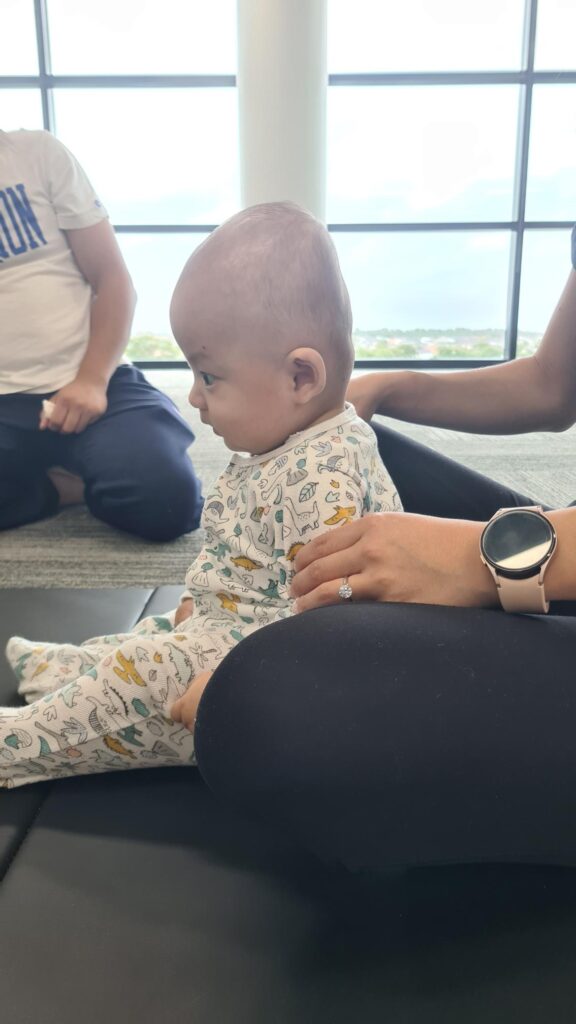
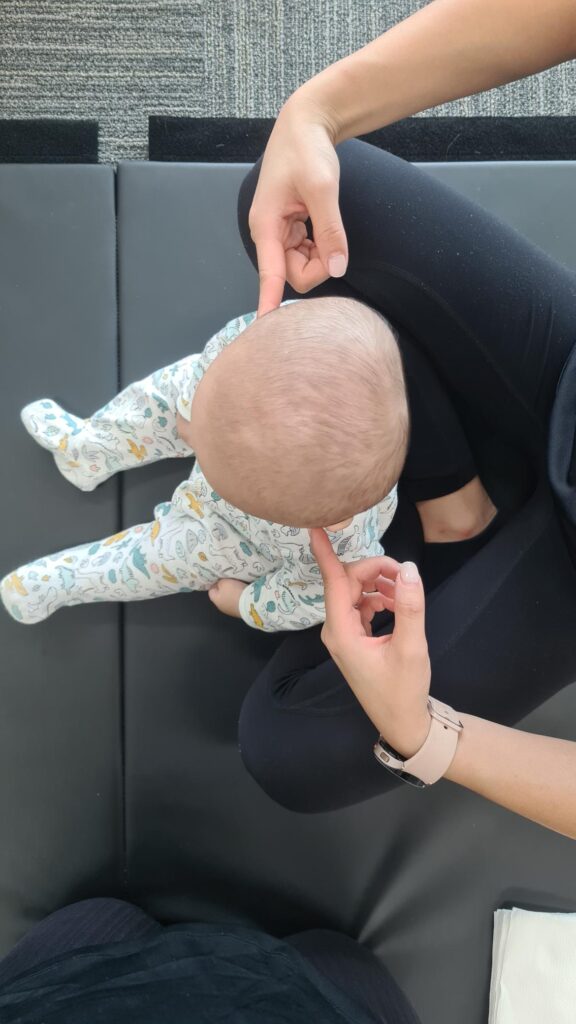
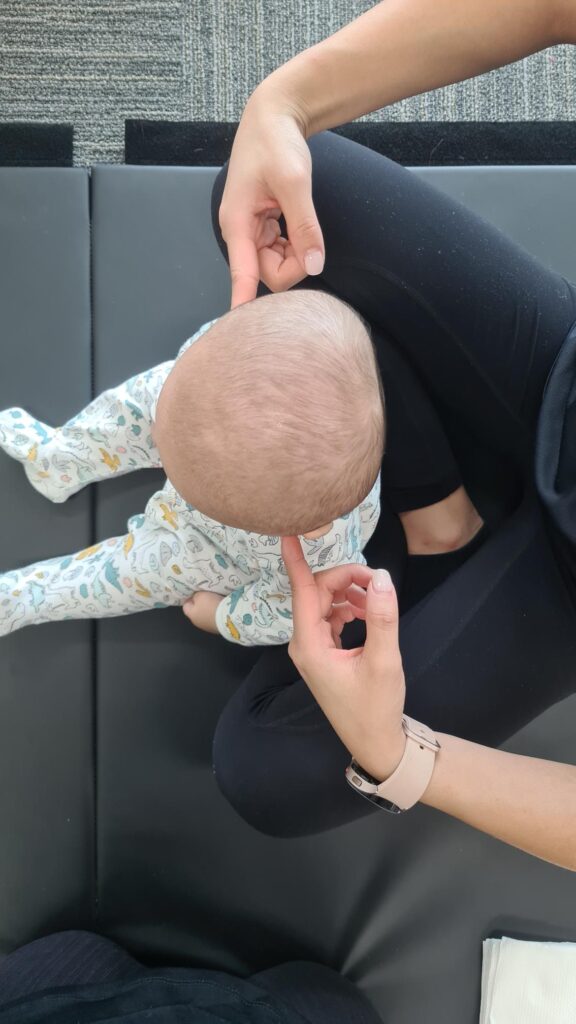
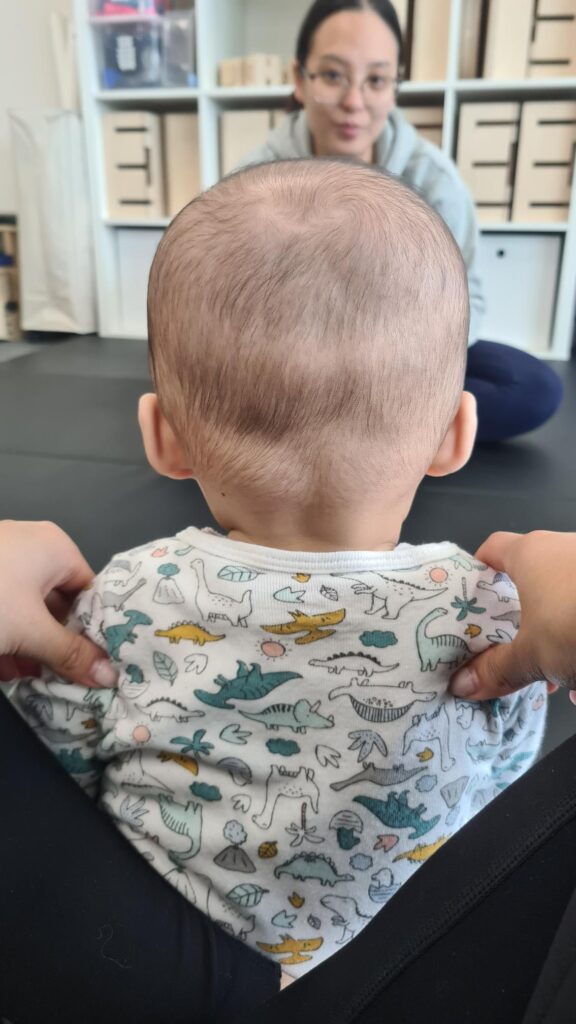
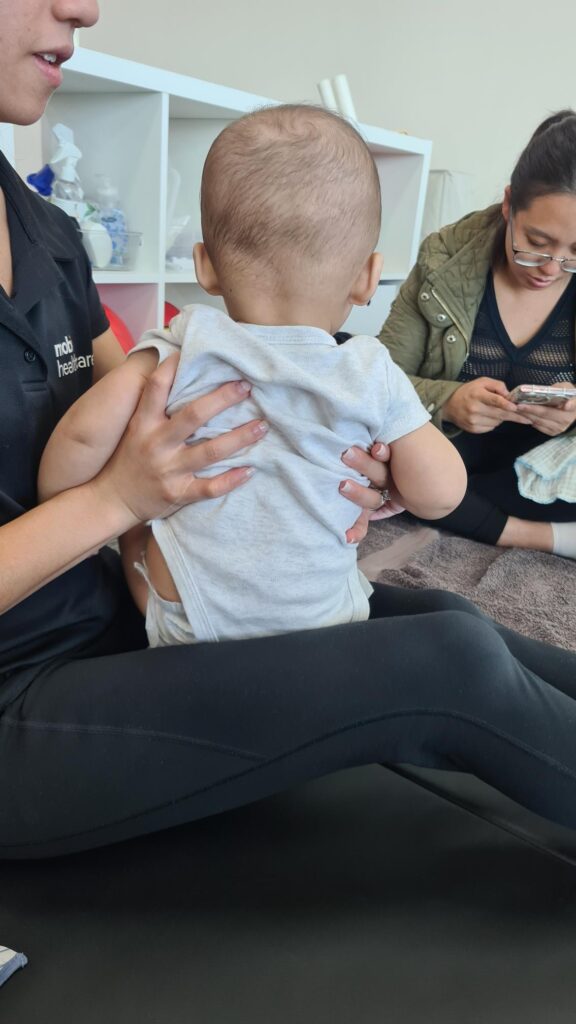
Common misconception: You do not need a referral from a GP to see a paediatric physiotherapist!
Don’t fret! our Mobi Kids physiotherapists can help.
Whilst Plagiocephaly and Torticollis primarily affect the head and neck, they can actually cause tension that extends throughout the entire body. This can lead to tightness in the hips and lower limbs, and potentially have an impact on developmental milestones.
Rest assured! Early intervention can address these areas of concern and optimise both cosmetic and developmental growth.
How do our Physiotherapists at Mobi Kids help?
- Total Motion Release (TMR) to improve range of motion
- Soft tissue massage to improve range of motion
- Improve head/neck control and strength
- Achieve symmetry in movement
- Stretching and positioning
- Encouraging tummy time
- Facilitate achievement of gross motor milestones
Importance of early intervention
By intervening early on, parents and health professionals can reduce the potential long-term consequences of torticollis and plagiocephaly. Addressing these concerns in infancy promotes optimal physical and functional development, whilst also reducing other associated risks like vision impairments and cognitive delays. Additionally, certain treatment modalities like helmet therapy, are more effective and are typically recommended during the earlier months of infancy (6-8 months). By recognising the signs early on and implementing appropriate intervention, we can ensure that our little ones have the best possible start to their developmental journey!
If you have any concerns about your little one, please contact us to book an appointment or have a discussion with one of our friendly team members who can guide you towards the best path for your child.
